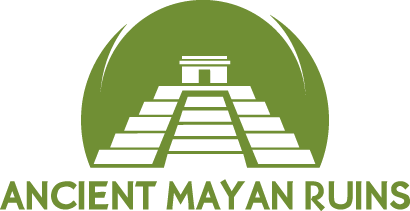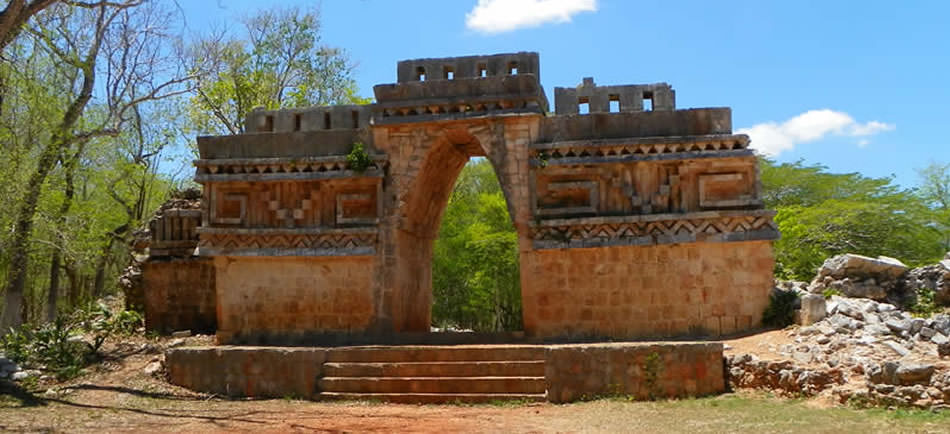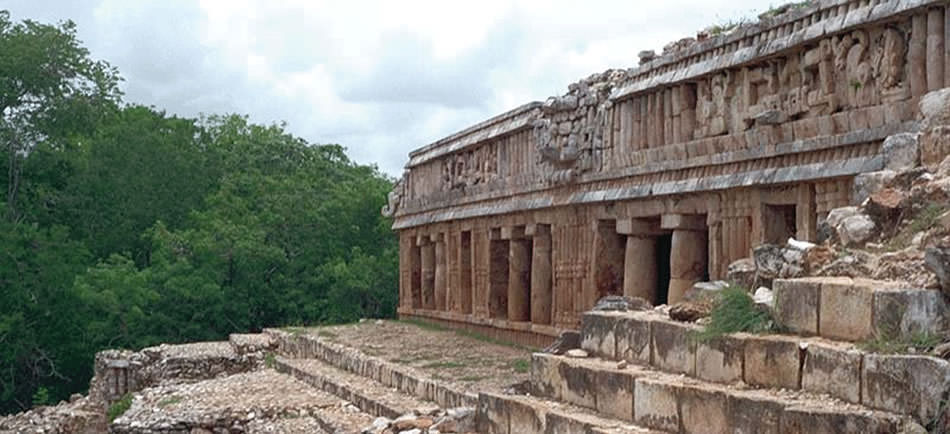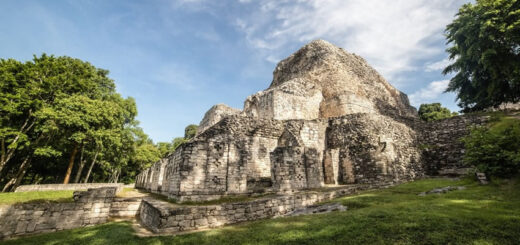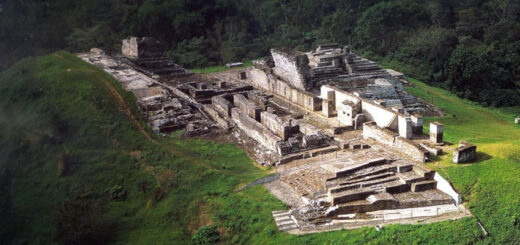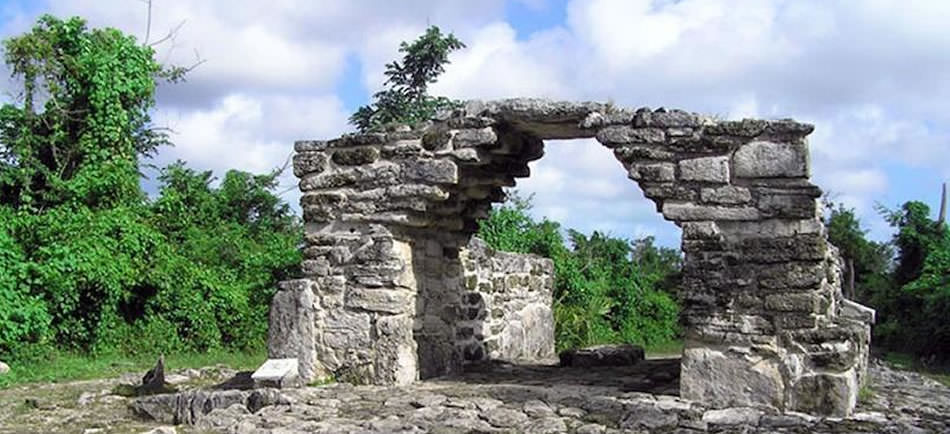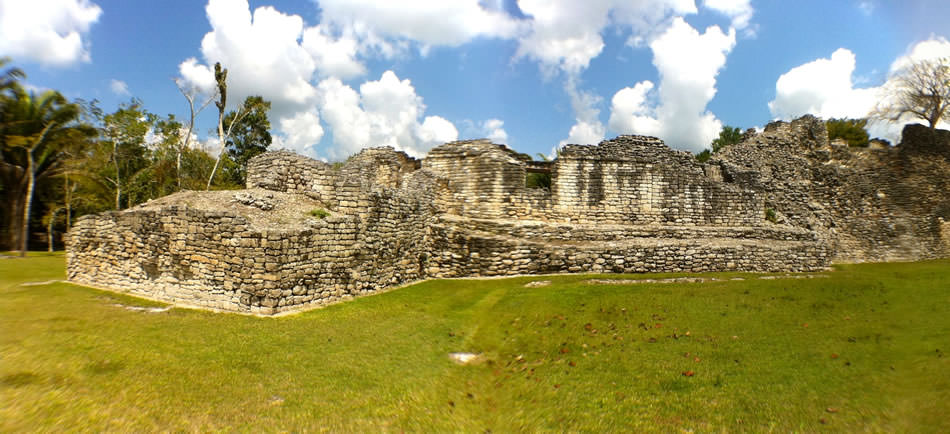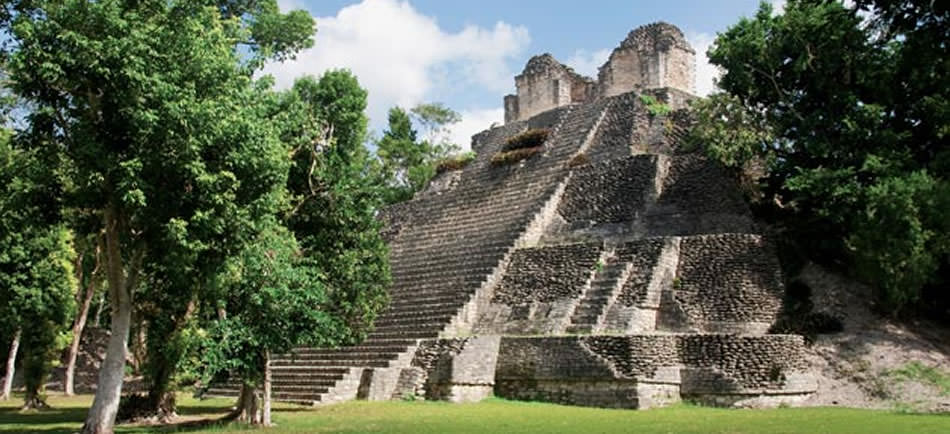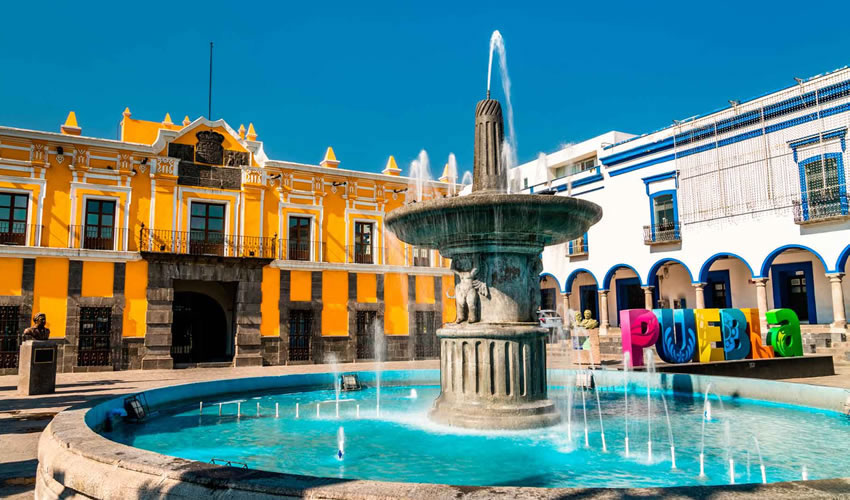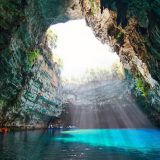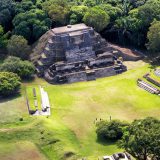
Comalcalco
Comalcalco is a significant archaeological site in Tabasco, Mexico. Unlike other Maya sites, Comalcalco is unique for its use of fired bricks and oyster shell mortar in construction, reflecting an adaptation to local materials.
The site includes impressive structures such as the Gran Acropolis, the Northern Plaza, and multiple pyramids and temples. Visitors can explore these ancient ruins and gain insight into the Mayans’ architectural ingenuity.
The name “Comalcalco” means “House of the Comals” and was given by later inhabitants who found this ancient city. Originally, the city was known by its Maya name, Joy Chan, meaning “Surrounded Sky” or “Rolled Sky”.
Comalcalco is a glimpse into the past, surrounded by the natural beauty of Tabasco.
Geography and Environment
Situated in the lush region of Tabasco, Comalcalco is surrounded by a tropical rainforest environment, near the Grijalva River. The region’s fertile land supported the cultivation of crops such as maize, beans, and cacao.
Best Time to Visit Comalcalco
The optimal time to visit Comalcalco is from November to April when the weather is temperate and there is less chance of rain. This period offers a comfortable experience for exploring the ruins and the surrounding area.
This time is the dry season and during these months, temperatures are typically colder and humidity lower, making it easier to navigate the site and appreciate its historical importance.
History and Chronology
Comalcalco was founded around the 1st century CE.
Its strategic location near the Grijalva River facilitated trade and agriculture, supporting its growth. The city thrived during the Late Classic period (600-900 CE), becoming a prominent political and economic center.
Unique among Maya sites, Comalcalco utilized fired bricks and mortar made from oyster shells, adapting to local resources. At its peak, Comalcalco was a vital part of the Maya civilization, involved in extensive trade networks and cultural exchanges.
However, by the end of the 9th century, the city experienced a decline, likely due to environmental changes, resource depletion, and sociopolitical factors, leading to its eventual abandonment.
- In 1880, French explorer Désiré Charnay discovered Comalcalco, documenting its ruins and creating detailed maps.
- In 1925, archaeologists Frans Blom and Oliver La Farge conducted significant excavations, discovering the “Tomb of the Nine Lords of the Night,” a crypt with stucco sculptures and glyphic inscriptions.
- In 1956-1957, Gordon Ekholm and Edwin Litman of the American Museum of Natural History excavated the south side of Temple VII, uncovering elaborate facades decorated with stucco masks.
- In 1966, George F. Andrews from the University of Oregon produced the first topographic map of Comalcalco, revealing the site’s extensive layout.
Modern Research and Preservation
- In 1972-1982, Ponciano Salazar led extensive excavations and conservation efforts, focusing on the North Plaza and the Gran Acropolis, and cataloging engraved bricks.
- In 1991, archaeologists Francisco Cuevas and Mario Pérez-Campa discovered fourteen human burials, including seven placed in large ceramic urns, providing insights into Maya funerary practices.
Today, Comalcalco is a well-preserved archaeological site, managed by the Instituto Nacional de Antropología e Historia (INAH). The on-site museum, inaugurated in 1984 and remodeled in 2011, displays over 600 artifacts.
Comalcalco Archaeological Zone
Comalcalco covers approximately 72 hectares and consists of several key architectural complexes, including pyramids, plazas, and residential areas, providing a comprehensive glimpse into ancient Maya urban planning and architecture.
Important structures of the site:
Gran Acropolis:
- Temple I (El Templo I)
- Temple VII (El Templo VII)
- The Palace (El Palacio)
Northern Plaza (Plaza Norte):
- Temple IIA (Templo IIA)
- The Ball Court (Juego de Pelota)
The Tomb of the Nine Lords of the Night (Tumba de los Nueve Señores de la Noche) contains stucco sculptures representing nine lords, along with glyphic inscriptions detailing their identities and roles.
The Funerary Complex is located on the outskirts of the city, this complex includes numerous burials and urns, reflecting the city’s funerary practices. Notably, 14 human burials were discovered, seven of which were placed in large ceramic urns.
Residential Areas include residential structures that provide insight into the daily life of its inhabitants. These areas show a range of architectural styles and building materials, highlighting the city’s development over time.
The Museum of Comalcalco houses over 600 artifacts, including the longest Maya epigraphic text found in Tabasco, engraved bricks, and various ceremonial and everyday objects, providing context and enriching the visitor experience.
How to get to Comalcalco Ruins?
The nearest towns and villages:
The town of Comalcalco itself is the closest urban area to the ruins.
Paraiso is a coastal town located 20 kilometers southeast of Comalcalco.
Villahermosa is about 60 kilometers southwest of Comalcalco.
How to get there:
Villahermosa: Several bus companies operate routes from Villahermosa to Comalcalco. The journey takes around 1.5 hours. Once in Comalcalco town, local transportation or taxis can take you to the archaeological site.
Paraiso: Head northwest on local roads following signs to Comalcalco. The drive takes about 30 minutes. Local buses and colectivos connect Paraiso with Comalcalco, offering a convenient and economical way to travel.
Tourist Information
- Comalcalco Ruins are open to visitors from 09:00 to 17:00 daily.
- The last entrance: 16:30.
- The entrance fee is generally modest, around 95 MXN (2024).
What to bring and what to wear?
Bring water and snacks. Ensure you stay hydrated, as exploring the ruins can be physically demanding, especially in the heat. Light snacks or energy bars can keep you fueled during your visit.
Wear sturdy, comfortable shoes suitable for walking and climbing, as the terrain can be uneven. Opt for lightweight, breathable clothing to stay cool. Long sleeves and pants can also help protect against insect bites.
Protect yourself from the sun with a wide-brimmed hat and sunglasses. The area can have mosquitoes, especially during certain times of the year, so bring repellent to avoid bites.
Capture the beauty and history of the ruins, but remember to respect any rules regarding photography. Enjoy your exploration of the Comalcalco ruins area, and immerse yourself in their fascinating history!
